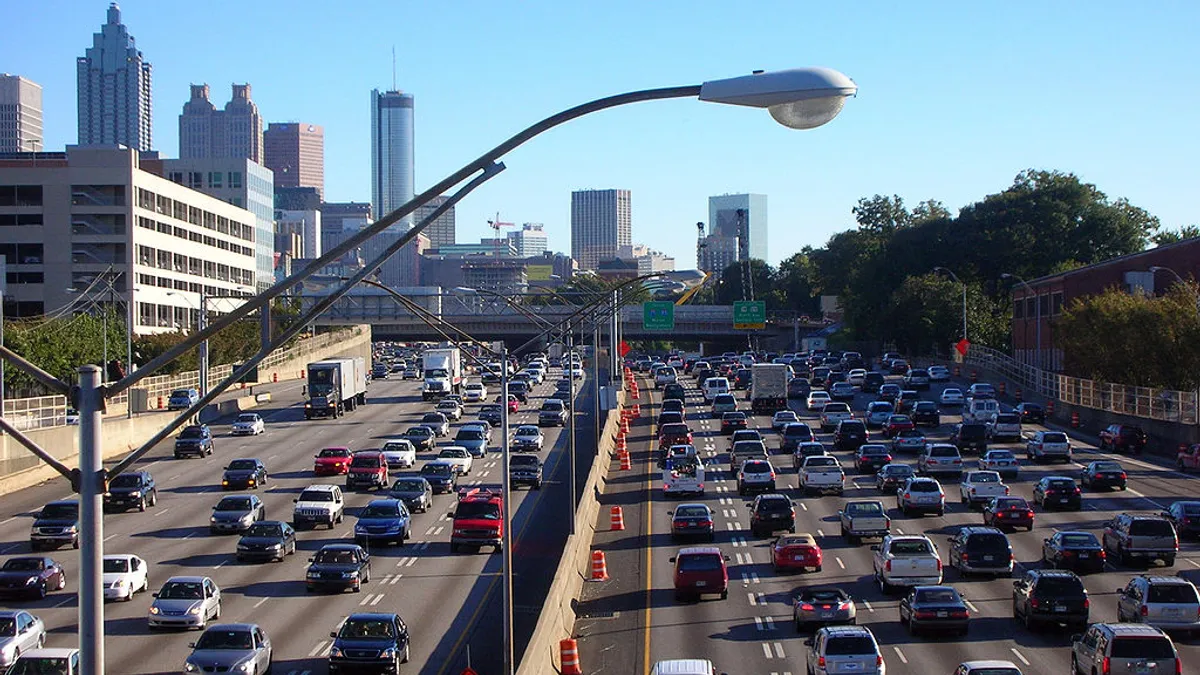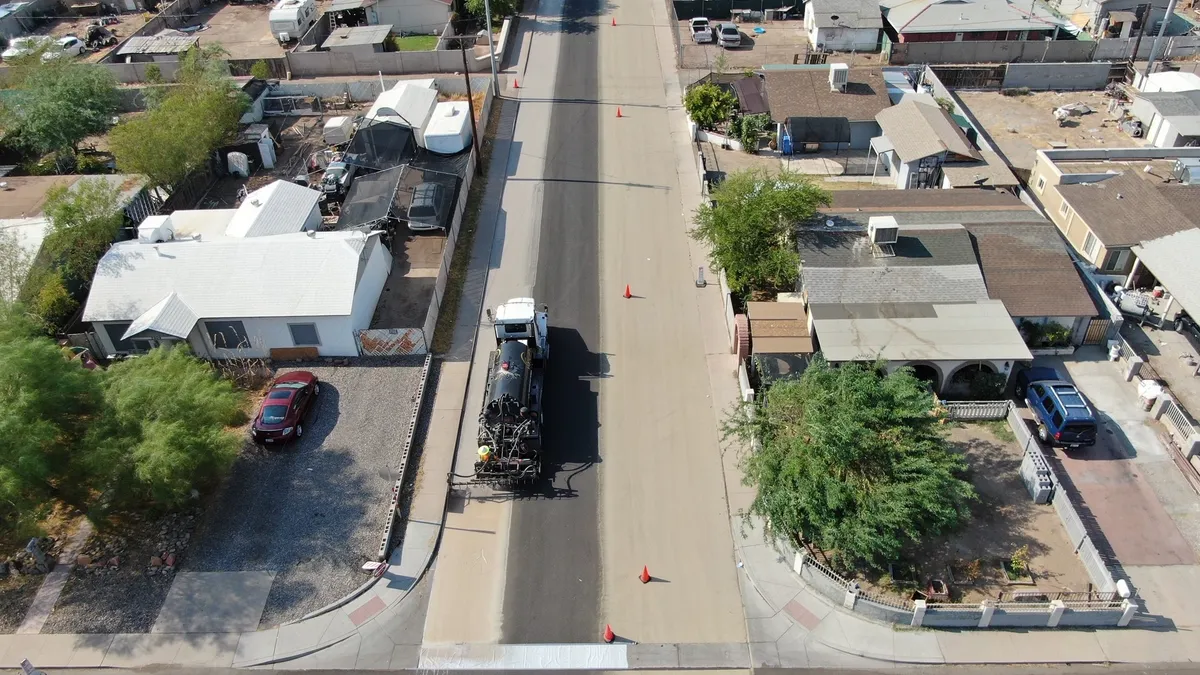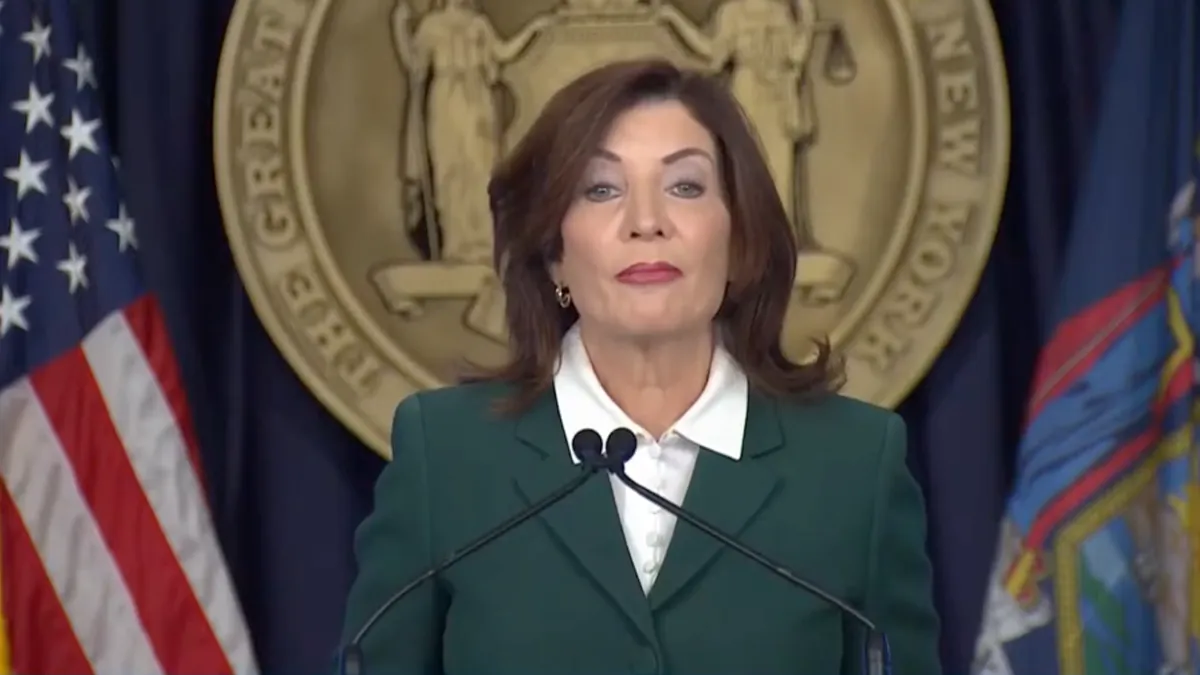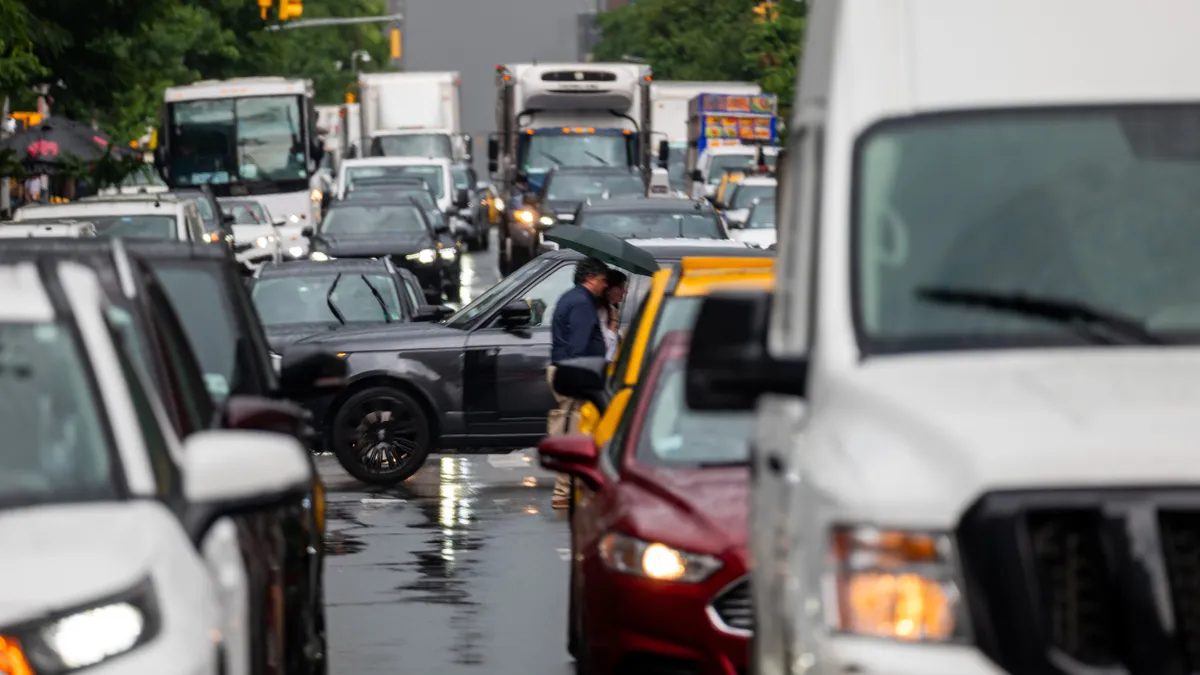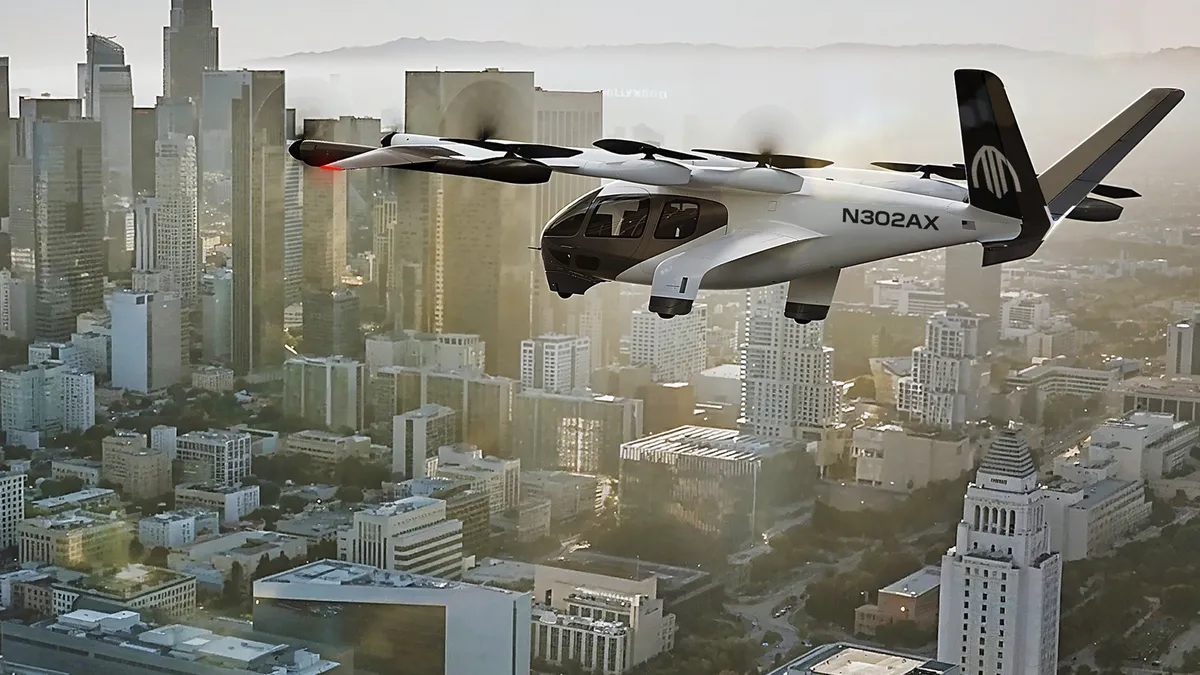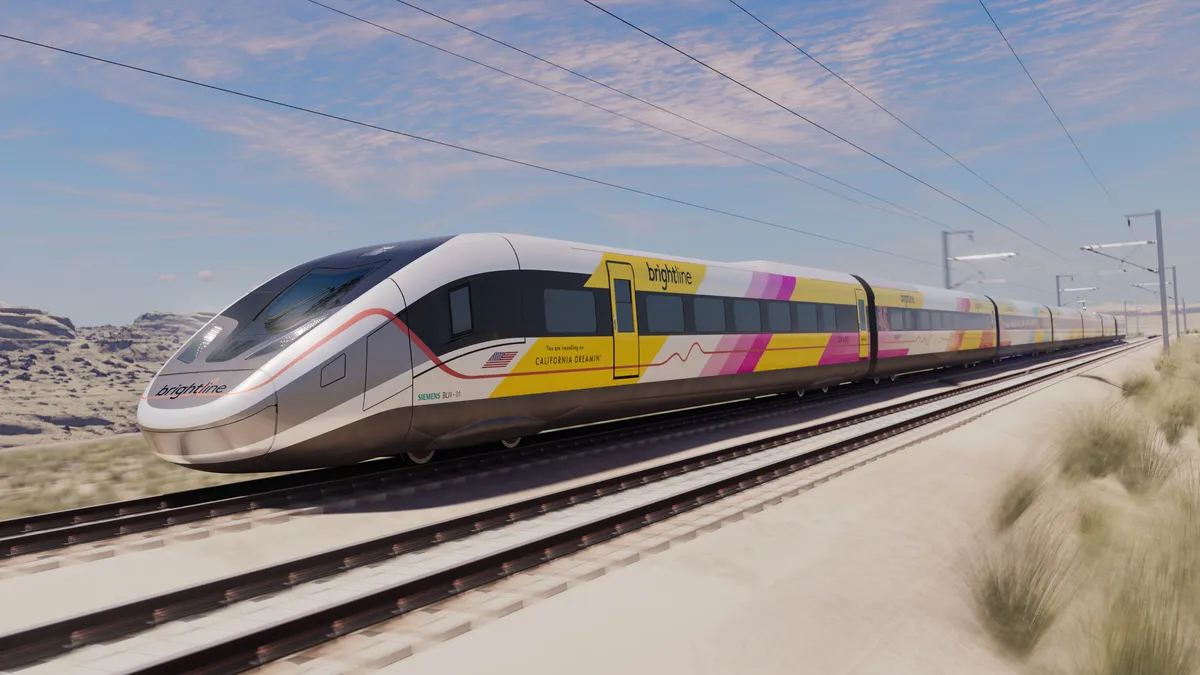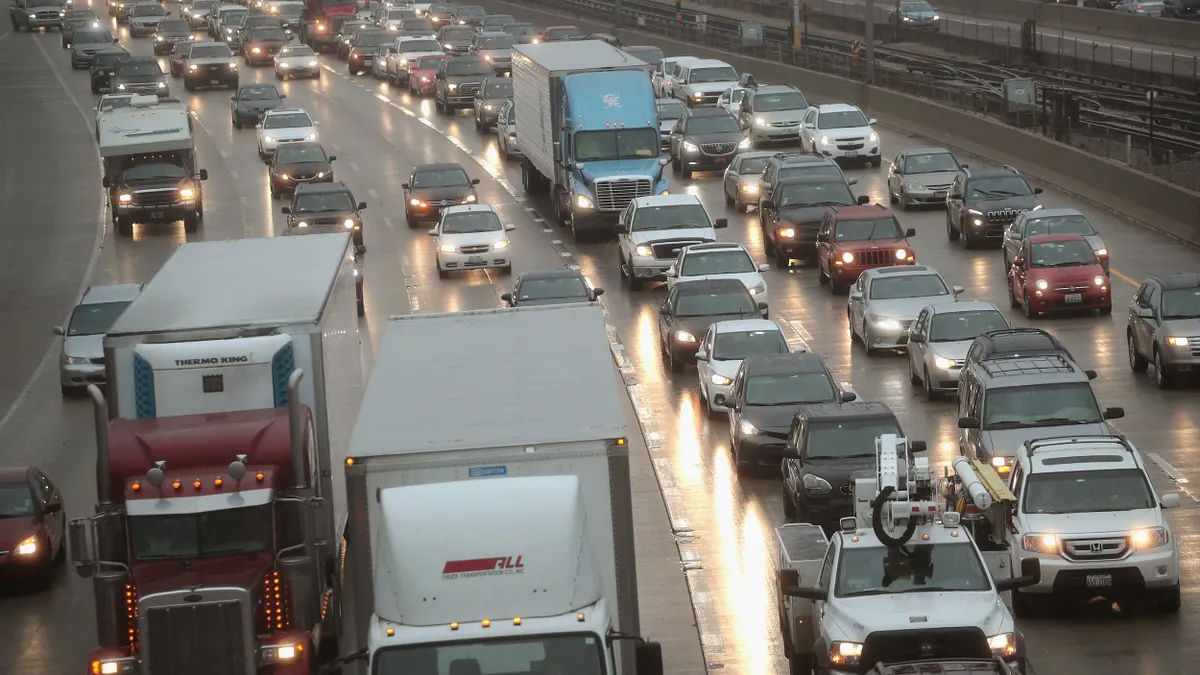In this feature series, the Smart Cities Dive team will take an occasional look at the practical, logical and down-right genius innovations that are transforming urban centers. Our aim is to ignite a thought or fire up a discussion that impacts the way you perform your job. We can't do this alone; pitch topics, talk to us and help us set the agenda.
Often the best way to understand a problem is not through simulations and projections, but with an actual case. This is the situation for many city planners, logistics specialists and transportation experts looking at what happened in Atlanta to help figure out the best and smartest response when a major highway is destroyed, leaving hundreds of thousands of commuters searching for new routes.
Recently designated as the most connected city in the land, Atlanta is under scrutiny after a portion of I-85 went up in flames and collapsed in early April. All sorts of headaches — transportation, logistics, poverty and connectivity —are rolled into one as the city navigates around the closure and road repair. For observers, there are lessons to be learned and questions to be answered:
- Is there a safe, secure way to store materials under a bridge?
- Does the city do enough to accommodate the homeless population?
- Which major employers have specific telework policies? How quickly can they be enacted?
- How many commuters are reachable via mobile devices?
- Under what circumstances are messages sent to those devices?
- Are mass transportation systems connected? Can all users, regardless of the carrier get alerts?
- How does a city handle the excess traffic that spills over to residential streets?
- Will financial incentives get the repairs complete sooner?
That's a quick checklist, and more questions will likely arise as this major disruption unfolds. Being able to answer these questions would not have averted the situation, but knowing these details puts a city in a better position to respond and react.
What will follow now is second guessing around Atlanta's infrastructure plans, its dependency on cars and the socio-economic gaps in this city of nearly 500,000. Considering the number of cars (340,000) on major roadways per day, it's astounding that a similar catastrophe did not happen sooner.
Keep in mind that the fire happened when many schools were on spring break. That diminished traffic and lessened the overall blow during the first week. Some commuters turned to MARTA and some of those new riders may continue to use public transportation even after the bridge is repaired and operational. Rider satisfaction will be the true determiner of whether some drivers will be converted to metro riders. MARTA put more trains in service, brought on more staff to direct the throngs of first-time users and people were able to get to where they need to be.
But, let's face it, mass transportation systems tend to rate low on the user experience scale. Once the break ended and the metro system was fully taxed, more problems cropped up. Other options? Atlanta is not a very flat city and while bike use is growing, it is still pretty low. The number of people pedaling to work will not significantly increase. It's already reaching highs of 80 degrees (though that's not why they call it Hotlanta) so imagine the temperatures a rider could endure in the coming weeks. The big winners are employees who are allowed to work remotely.
The biggest winners are cities that use the bridge collapse as a teachable moment, and transportation teams that ask how this could have been avoided. The easy answer: Do not store unsecured PVC pipe under a bridge. There will be scores of reports to hash out the not-so-easy answers.
Highway construction in Atlanta is notorious and frustrating. But we leave you with this smart presentation the city and its mayor made for the DOT's Smart City Challenge.
Here's what else is worth your time and attention this week…
Innovations
Fresh face: Pittsburgh evokes smoke stacks, steel and factories, right? Thanks to efforts from Pittsburgh Green Story, those bygone images are being erased. The efforts of Pittsburgh to be more resourceful, more connected and more livable are featured on this newly-launched site. Communicating the right message is vital to smart city success, and that's exactly what Pittsburgh is doing.
What the..?: New York and Dubai are joining forces on a mega-story dangling, orbiting building. Check it out here, and then tell us — what is the point?
Staying connected: While the U.S. prefers various branches and divisions of government to handle connected services, Moscow champions centralization as a way to maintain oversight on all of its IT. The way the Russian city sees it, having infrastructure, government and services under one organization means better communication and better integration.
Centennial celebration: Chulalongkorn University said it wanted to take a purposeful action to honor its 100-year anniversary — and it did, with the opening of CU Centenary Park. The beneficiaries of this effort are Bangkok residents who have had little land to bike, jog, or congregate. We may take these things for granted, but green spaces are less than abundant in this city of 8 million people. The university's long-term plan is to make neighborhoods into mini smart cities.
Two steps forward, one step back
Celebration, FL was designed and built as a place where residents would not need a car to get around, where people enjoy nature and can get away from the hustle and bustle. But when the fire chief steps in and wants to retrofit the roads and the landscape for his big 'ol fire trucks, what's a community to do? And by retrofit, the chief means getting rid of trees and such. Over at Mother Nature Network, Lloyd Alter has some suggestions.
Smart cities can take a cue from the bucolic town. Figuring out the highest good for a community is a common problem, and more often than not, a solution is found when the issue is not presented as an either/or. Residents should not have to choose between getting hit by a car or having a house burn down.
Cities in the Smartlight
Buenos Aires: The Argentinean capital is encountering a few issues while making the transition to smart city. It is grading out at an A in building design and communication tech. In tackling poverty and access to more basic services, it gets a failing grade. Bottom line, this is true of all cities undergoing the retrofit from not smart to smart — and Buenos Aires will be a place to watch.
Kuwait: How much is a smart city going for these days? Roughly $4 billion according to a report in the Asia Times that says Korea will build a smart city in Kuwait.
Smartypants
A trip to Detroit and a fascination with shipping containers served as the inspiration for Aaron Holm's Seattle-based startup, Blokable. Seattle is but one city struggling to meet high demand for affordable housing. Holm wanted to solve for a few issues; how to significantly reduce traditional construction time, how to make affordable, smart communities that would be desirable, adaptable and valuable. Blockable manages to check all those boxes while making the units/communities LEED ready, accessible and stackable. Holm is currently working with a few cities to provide living spaces for their homeless populations as well as creating affordable home solutions.



